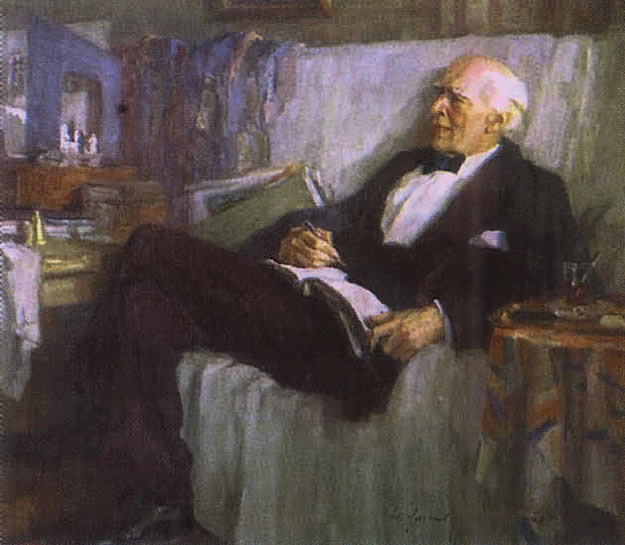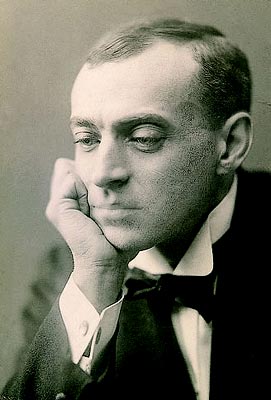
- •Ббк 85.33:81.2 Англ я7
- •Введение
- •Introductory part
- •Voice in the performing art
- •Голос и речь в сценическом искусстве
- •Советы при работе с текстом
- •Стихи как один из видов голосового тренинга
- •Междометия в постановке голоса
- •1. «Прыгуны» - алле – гоп!
- •2. «Пильщики» - с! с! с!
- •8. «Победительницы» - Ай да!
- •9. «Шутка» - Ав-ав!
- •10. «Звукоподражатель».
- •I’ve got a little horse.
- •English intonation
- •A n Extract from the Book by Jerome k. D.
- •“Three Men in a Boat (To Say Nothing of the Dog)”
- •Отрывок из книги д. К. Джерома
- •«Трое в лодке, не считая собаки»
- •Phonetic exercises
- •Genres of theatre
- •Voltaire (1694-1778)
- •Visiting the theatre
- •A t the broadway theatre
- •Phrase-list Performing Arts
- •Conversation
- •E arly theatres
- •British theatres
- •Theatres in shakespeare’s time
- •British theatres today
- •T heatre in russia
- •A new theatre was born
- •Looking for new ways
- •Great actors
- •Sir laurence olivier
- •T he great comedian
- •M ovies, movies, movies
- •The art of transformation
- •B rad pitt
- •S moktunovsky and english
- •Theatre traditions
- •Interviewing an actor
- •Literature and drama
- •William shakespeare
- •Richard sheridan
- •T he myth of pygmalion
- •My fair lady
- •O scar wilde
- •John james osborne
- •Bertold brecht
- •Anton chekhov
- •E ugene gladstone o'neill
- •Tennessee williams
- •George gordon byron
- •Charles dickens
- •Music of the united kingdom
- •Edward benjamin britten
- •Andrew lloyd webber
- •M usic of the united states
- •George gershwin
- •T he proms
- •Music and youth culture
- •Rock & roll
- •R eggae
- •Beatboxing
- •Music genres of the youth
- •I nsomniac
- •British songs
- •Auld lang syne Scottish Song
- •Перевод с. Я. Маршака
- •Bobby shaftoe English Folksong
- •Charlie is my darling Scottish Folksong
- •Cockles and mussels
- •Irish Song
- •I saw three ships come sailing by English Folksong
- •Home, sweet home English Song
- •Land of my fathers Welsh Song
- •My bonnie British traditional song
- •O, no, john! English Folksong
- •Перевод с. Болотина и т. Сикорской
- •There was an old woman English Folksong
- •Перевод с. Я. Маршака
- •There’s a hole in my bucket Popular Folk Song from Britain
- •Greensleeves English Folk Song
- •Перевод с. Я. Маршака
- •For he’s a jolly good fellow Popular English Social Song
- •Twelve days of christmas
- •Amazing grace
- •A red, red rose
- •Перевод д. Тим
- •Author Unknown
- •American songs
- •Jingle bells
- •Billy boy
- •Oh, my darling, clementine
- •We shall overcome
- •Перевод с. Болотина и т. Сикорской все преодолеем
- •What a wonderful day
- •Перевод а. Дюка Прекрасный мир
- •From the history of british paiting
- •An american style of painting
- •Pablo picasso
- •Issac levitan
- •Theatre and stage design
- •Stage designer
- •Favorsky as a stage designer
- •P hotography
- •Conversations
- •Presentation
- •P art eight theatrical sketches small talk
- •Informal Greetings
- •Invitations
- •English business etiquette
- •English weather
- •E nglish humour
- •Funny stories and jokes Math, Physics, & Philosophy
- •Sherlock Holmes and Watson
- •Genie in the Lamp
- •Magician
- •Lippy Parrot
- •Small talk
- •Projects
- •Appendix 2
- •The Performing Arts: a Guide to the Reference Literature / Linda Keir Simons, 1994. Заключение
- •Contents
- •Зинаида Евгеньевна Фомина искусство как средство изучения английского языка
- •394006 Воронеж, ул. 20-летия Октября, 84.
A new theatre was born
In 1898 Stanislavsky and Nemirovitch-Danchenko decided to found a new theatre. They had no company of their own so they invited young actors. Stanislavsky and Nemirovitch-Danchenko took the tragedy “Tsar Feodor Ioanovitch” by Alexey Tolstoy for the first performance. They preferred to stage this play because they wanted to show the historical truth on the stage. The directors wanted to convey the authentic atmosphere of the 16th century Russia. They did not want any traditional set. So the set designer Simov went to old Russian towns Rostov and Yaroslavl. There he made sketches of old cathedrals, costumes and furniture.
 The
rehearsals began in June 1898 and lasted till October. On the 14th of
October 1898 the new Moscow theatre opened. The new theatre with its
progressive ideas, its new style of acting and direction had a great
effect and the performance made a big impression on the Moscow
public. The public liked the acting, the scenery and costumes of the
performance very much. Moscow newspapers wrote that a new unique
theatre was born. The name of this theatre was the Moscow Art
Theatre.
The
rehearsals began in June 1898 and lasted till October. On the 14th of
October 1898 the new Moscow theatre opened. The new theatre with its
progressive ideas, its new style of acting and direction had a great
effect and the performance made a big impression on the Moscow
public. The public liked the acting, the scenery and costumes of the
performance very much. Moscow newspapers wrote that a new unique
theatre was born. The name of this theatre was the Moscow Art
Theatre.
Questions:
When did Stanislavsky and Nemirovitch-Danchenko found the Moscow Art Theatre?
Why did they invite young actors?
What play did they choose for the first performance?
Why did the artist Simov go to Rostov and Yaroslavl?
When did the rehearsals begin?
How long did the rehearsals last?
What was the reaction of the public and the press?
Looking for new ways
1. Russia gave the world such outstanding innovators and stage reformers as K. Stanislavsky, E. Vakhtangov and V. Meyerhold. Each of them had his own working method and their achievements have brought them general acclaim. Their systems have played an outstanding role in the development of the 20th century theatre.
K .
Stanislavsky
(1863-1938) – an outstanding stage-director and theorist looked for
new ways of scenic expressiveness. Stanislavsky strove to create an
authentic atmosphere in the theatre. The Stanislavsky System fought
against overacting and clichés. Stanislavsky developed a technique
which helped actors to build the inner world of the character
portrayed on the stage. Stanislavsky’s “art of adaptation”
concerned everything from the actor’s make-up to the inner
identification with the character. All over the world actors and
directors follow his method.
.
Stanislavsky
(1863-1938) – an outstanding stage-director and theorist looked for
new ways of scenic expressiveness. Stanislavsky strove to create an
authentic atmosphere in the theatre. The Stanislavsky System fought
against overacting and clichés. Stanislavsky developed a technique
which helped actors to build the inner world of the character
portrayed on the stage. Stanislavsky’s “art of adaptation”
concerned everything from the actor’s make-up to the inner
identification with the character. All over the world actors and
directors follow his method.
2. E. Vakhtangov (1883-1922) was stage’s greatest pupil. If Stanislavsky had been reforming the theatre for more than 40 years, Vakhtangov’s creative life lasted only five but very fruitful years. His productions incorporated music, dance, abstract costume, avant-garde sets as well as a detailed analysis of the texts of plays and the psychological motivations of the characters.
3 .
V.
Meyerhold
(1874-1940) was the famous innovator of new stage laws. He never
repeated himself, never stopped experimenting. In contrast to
Stanislavsky who wanted the spectators to lose themselves in the
atmosphere of the play, Meyerhold wanted the spectators to
remember that they were in a theatre, to make them think.
.
V.
Meyerhold
(1874-1940) was the famous innovator of new stage laws. He never
repeated himself, never stopped experimenting. In contrast to
Stanislavsky who wanted the spectators to lose themselves in the
atmosphere of the play, Meyerhold wanted the spectators to
remember that they were in a theatre, to make them think.
Words & Expressions:
scenic – сценический, театральный
overacting – переигрывать
to portray – изображать
art of adaptation – искусство перевоплощения
Exercise. Match the words with their meanings.
actor a) a special building or place for the performance of plays
director b) a person who produces works of art (paintings, drawings)
theatre c) a writer of plays
playwright d) you see this person in plays or films
stage e) a person who gives instructions to actors in a play or film
artist f) a person who writes music
composer g) the raised floor on which plays are performed in a theatre
PART FOUR
